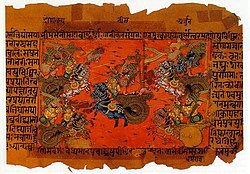51. Pawanhrad tirtha, Pabnawa
52. Falgu tirtha, Faral
53. Pawaneshwar tirtha, Pharal
54. Kapil Muni tirtha, Kalayat
55. Pundrik tirtha, Pundri
56. Trivishtap tirtha, Tyontha
57. Kotikut tirtha, Kyodak / Keorak: by 2021 ₹1.02 crore was spent on tirtha development. [32] 58. Banteshwar tirtha, Barot, Haryana
59. Namish tirtha, Nauch, Haryana
60. Vedvati tirtha, Balwanti
61. Vridkedar tirtha, Kaithal
62. Sarak tirtha, Shergarh, Kaithal
63. Manush tirtha, Manas, Kaithal
64. Navadurga tirtha, Devigarh, Kaithal
65. Gyaraharudri tirtha, Kaithal
66. Aapga tirtha, Gadli
67. Juhomi tirtha, Hajwana
| 68. Vishnupada tirtha, Barsana, Kaithal
69. Yajnasanjna tirtha, Geong
70. Kapilmuni tirtha, Kaul
71. Kulotaran tirtha, Kaul
72. Garhratheshwar tirtha, Kaul
73. Matri tirtha, Rasulpur, Kaithal
74. Suryakunda tirtha, Habri (Jyotinagar colony): by 2021 ₹67 lakh was spent on tirtha development, more budget will be spent as it was still in the initial stage of development. [32]
75. Havya tirtha, Bhana
76. Chakramani tirtha, Sherda: by 2021 ₹1 crore was spent on tirtha development, second phase of which was still underway. [32]
77. Rasamangal tirtha, Songhal: by 2021 ₹1.30 crore was spent on development of Kukrityanshan and Rasamangal tirhtas. Ghats conference hall, toilet were built. [32] 78. Mukteshwar tirtha, Mator, Kaithal: by 2021 ₹1.92 crore was spent on tirtha development. [32]
79. Sritirtha, Kasan, 80. Srikunja tirtha, Banpura
81. Ekshumati tirtha, Theh Polar partially excavated ancient archaeological mound associated with the rishi Pulastya. [34]
82. Sutirtha tirtha, Sontha
83. Brahmavarta tirtha, Brabhavat
84. Aruntak Yaksha, Beharjaksha
| 85. Sringi Rishi tirtha/ Shankhni Devi tirtha, Sangan
86. Gobhwan tirtha, Guhana
87. Suryakunda, Sajuma
88. Seetvan/Swaragdwara tirtha, Siwan, Kaithal
89. Brombhodumber tirtha, Shila Kheri
90. Anyajanma tirtha, Deoda Kheri
91. Devi tirtha, Kalsi, Kaithal
92. Dhruvakunda tirtha, Dherdu
93. Kukrityanashan tirtha, Kaukat: by 2021 ₹1.05 crore was spent on development of Kukrityanshan and Rasamangal tirthas. [32] 94. Kavya tirtha, Karoda
95. Lavakusha tirtha, Mundri
96. Vamana tirtha, Sounghal
97. Rinmochan tirtha, Rasina 98. Alepak tirtha, Shakra
99. Devi tirtha, Mohna
100. Gandharva tirtha, Gohran Kheri
|

